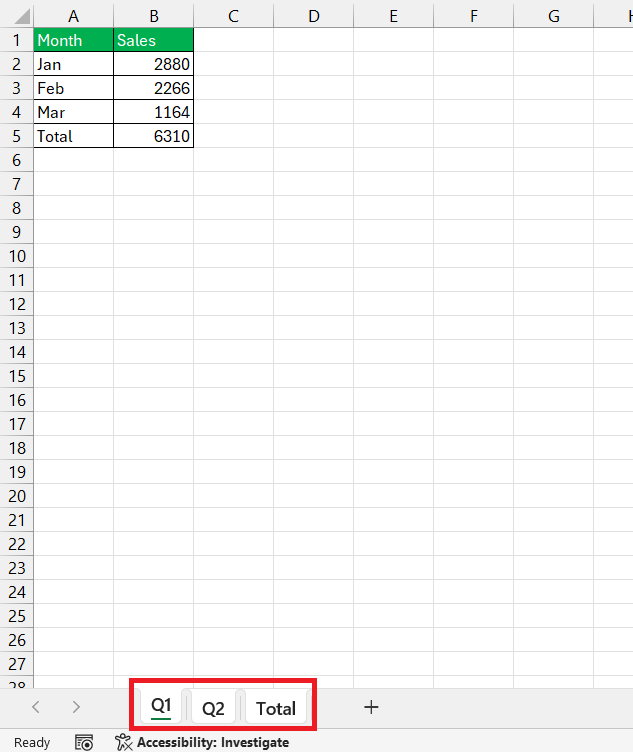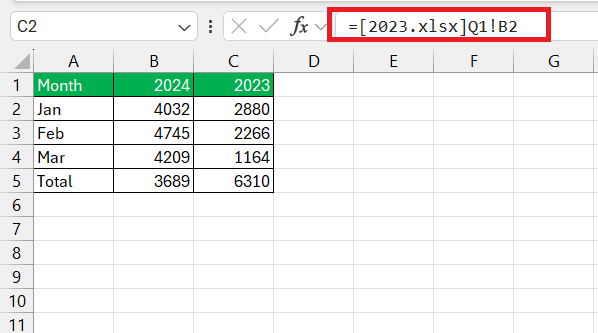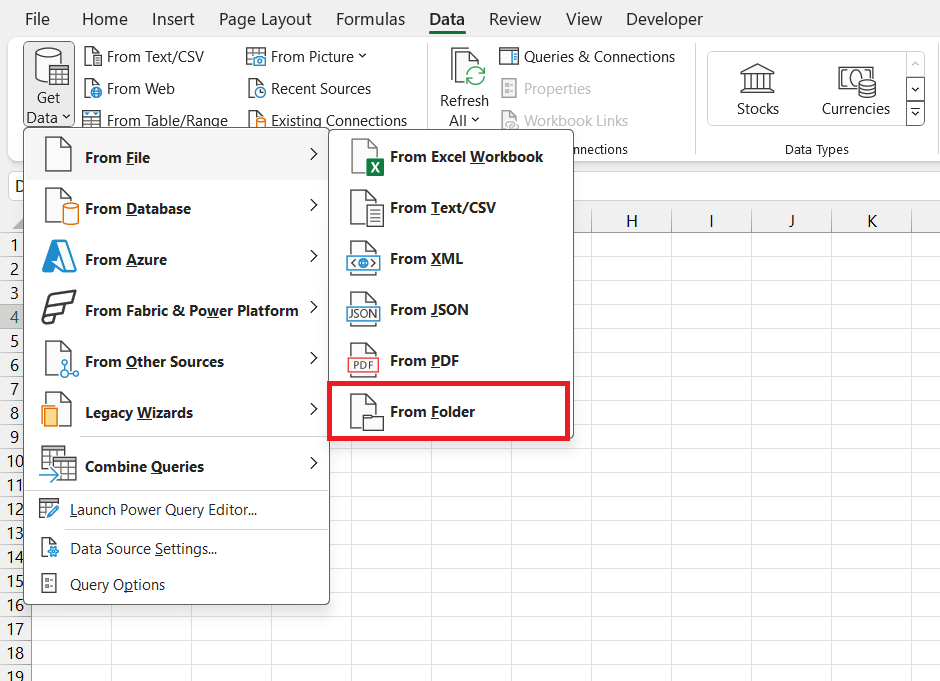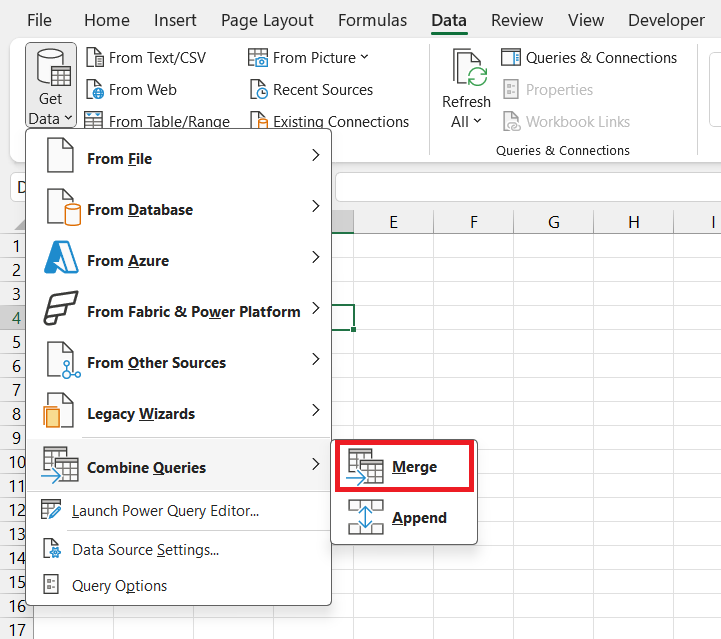Managing multiple Excel files efficiently is crucial for anyone working with large datasets or complex reports. In this guide, we’ll explore practical strategies to organise multiple Excel files to link data across workbooks.
Key Takeaways:
- Efficient file organization saves time and minimizes errors when handling large datasets.
- Excel’s view and arrangement tools help you work seamlessly across multiple files.
- Grouping worksheets allow you to apply changes across multiple sheets simultaneously.
- Power Query simplifies the process of merging data from multiple Excel files.
- Keyboard shortcuts enhance file management, speeding up navigation and workflow.
Table of Contents
Introduction: The Excel Efficiency Booster
Why Mastering Excel File Organization is Essential for Efficiency
Mastering the organization of Excel files is an essential skill that can dramatically improve my efficiency and productivity. It’s not just about keeping data tidy; it’s about being able to navigate large datasets quickly and accurately, which is crucial for making informed decisions based on the data.
Efficient file organization saves time and reduces errors, making it possible for me to focus on analysis instead of getting bogged down by data management.
How to Get Started with Multiple Excel Files
Getting started with managing multiple Excel files doesn’t have to be overwhelming. First, I ensure that all relevant workbooks are accessible and backup copies are made to avoid any accidental loss of data. Opening the files and familiarizing myself with their structure and content sets the foundation for effective file handling.
Next, I use Excel’s robust view and arrange functions to display the files side-by-side for easy cross-referencing. Most importantly, I make sure to enable multi-window viewing to effortlessly toggle between documents or observe them concurrently for comparison purposes.
Streamline Your Workflow with Grouping Techniques
Viewing Multiple Worksheets at Once for Comparative Analysis
When I need to compare data across multiple worksheets, Excel’s side-by-side viewing feature is invaluable. I start by opening the worksheets I want to compare and head to the View tab. Once there, clicking on ‘New Window’ duplicates the current workbook in a new window.
By selecting ‘View Side by Side’, Excel places the two worksheets side by side, allowing me to compare them with ease.
For synchronized scrolling, I enable ‘Synchronous Scrolling’ which ensures that as I scroll through one worksheet, the other one moves in tandem, making comparative analysis quick and painless.
Using this method, multiple worksheets will be displayed side by side.
Grouping Your Worksheets Together for Simplicity and Speed
Grouping worksheets in Excel is a game-changer for working with multiple sheets. I select related sheets by holding down the Ctrl key and clicking on each tab I want to group.
This allows me to enter data, create formulas, apply formatting, and make other changes once, and they’re reflected across all grouped sheets, saving me a significant amount of time. This is especially effective for repetitive tasks such as monthly reporting or updating standard tables.
If the sheets are adjacent, I simply click the first sheet tab, hold the Shift key, and then click on the last sheet tab to group the entire range.
Organize Large Datasets Like a Pro
Use Formulas to Link and Organize Data Across Sheets
Using formulas to link and organize data across Excel sheets turns complex data management into a streamlined process. For instance, the ‘VLOOKUP’ or ‘INDEX’ and ‘MATCH’ combination enables me to retrieve information from different sheets based on a common identifier. I can also use the ‘SUMIF’ or ‘COUNTIF’ series to aggregate data based on certain criteria.
You can reference a cell from another workbook using the syntax:
=[WorkbookName]SheetName!CellReference
- WorkbookName: The name of the external workbook (e.g., 2023.xlsx)
- SheetName: The sheet within the workbook that contains the cell or range you want to reference (e.g., Q1)
- CellReference: The cell or range you want to reference (e.g., A1).
Additionally, 3D references can consolidate related data across multiple sheets just by specifying the range of sheets to include in the calculation, making data organization more dynamic and interconnected.
Harnessing Excel’s Power Query for Merging Multiple Files
Harnessing the Power Query tool in Excel is like having a data wizard at my fingertips. It simplifies the task of merging multiple files with the same schema stored in a folder. I’ll start by selecting ‘Data’ > ‘Get Data’ > ‘From File’ > ‘From Folder’ to point Excel to the folder containing the files I want to combine.
Power Query makes it easy to preview and modify the data from these files before consolidation. After locating the desired folder and confirming the listed files are correct, I choose ‘Combine’ and let Power Query work its magic.
It helps me to set up a query once, which I can then refresh monthly for updated results—this feature is particularly useful for tasks like compiling monthly departmental reports.
Beyond Basic Functions: Excel Shortcuts and Hidden Features
More Keyboard Shortcuts to Speed Up File Management
To enhance my productivity in Excel, I’ve become proficient with keyboard shortcuts that speed up file management. For instance, Ctrl + Tab allows me to swiftly switch between Excel windows, and if I need to scroll in reverse, Ctrl + Shift + Tab is the way to go.
When working with large datasets, Ctrl + Page Up or Ctrl + Page Down let me navigate between sheets within a file quickly. And for arranging individual windows, the combination of the Windows key + Arrow keys snaps windows to the sides of the monitor, streamlining the data comparison process across multiple files.
FAQ: Excel File Organization Made Simple
How Can I View Multiple Excel Files Side-by-Side?
To view multiple Excel files side-by-side, I open the desired workbooks and click on the ‘View Side by Side’ option within the View tab. This will automatically arrange the open workbooks side by side for easy comparison. If there are more than two workbooks open, a dialog box will appear, prompting me to select the specific workbook I wish to compare with the active one. This method streamlines my comparative analysis and boosts my multitasking efficiency.
What Is the Easiest Way to Combine Data from Multiple Excel Sheets?
The easiest way to combine data from multiple Excel sheets is by using the Consolidate feature under the Data tab. I simply select the upper-left cell of the area I wish to consolidate into, then click ‘Consolidate’ and select the sum, average, or other operation I want to apply. Next, I add references to the data ranges from other sheets, ensuring each range is identical in layout and size for accurate results. This method simplifies data integration, saving me considerable time.
Can I Merge Excel Files without Opening Each One Individually?
Yes, I can merge Excel files without opening each one individually using the Power Query feature. I gather the files in a single folder, navigate to ‘Data’ > ‘Get & Transform Data’ and select ‘From File’ > ‘From Folder.’ Power Query will then combine the content of those files into a new workbook without me having to open them one by one, streamlining the merging process.
Is There a Way to Link Data Across Different Excel Workbooks?
Absolutely, I can link data across different Excel workbooks by using cell references that include the workbook’s name, the worksheet’s name, and the cell’s address. With both workbooks open, I type an equal sign ‘=’ in the cell where I want the linked data to appear, navigate to the source workbook, and click on the cell with the desired data. Excel automatically forms a reference link. This connection allows data in one workbook to update in real-time based on changes made in another.
How do I consolidate multiple Excel files quickly?
To quickly consolidate multiple Excel files, I use the data consolidation feature. I start by opening a new Excel sheet where I’ll consolidate the data. Next, I go to the ‘Data’ tab, select ‘Consolidate’, and choose the function for consolidation. Then, I use the ‘Add’ button to select the range from each file I wish to consolidate. If the data spans across multiple files, I use the ‘Browse’ option to locate and include them. This method is swift and effective, particularly for summarizing and analyzing data spread over various spreadsheets.
John Michaloudis is a former accountant and finance analyst at General Electric, a Microsoft MVP since 2020, an Amazon #1 bestselling author of 4 Microsoft Excel books and teacher of Microsoft Excel & Office over at his flagship MyExcelOnline Academy Online Course.















